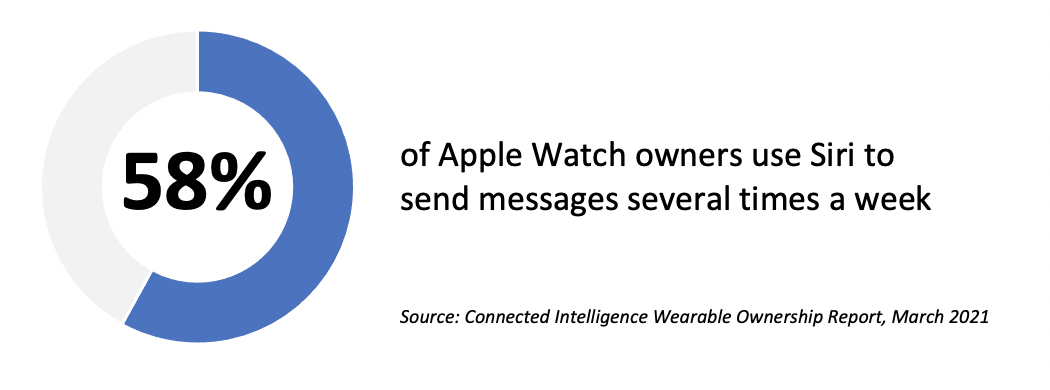
(Don’t) Say My Name
Android Police has spotted an interested trial feature for Google Assistant: the ability to skip the “Hey Google” wake-up command. Codenamed “Guacamole” the feature looks like it will work with an opt-in selector. At this time, only Google employees appear to be able to use the feature, so it may never make it to the big wide world. But we’ve seen early examples of the functionality already, such as the ability to stop a ringing alarm by simply saying “stop” rather than “Hey Google, Stop.”
The NPD Take:
- Clearly most of the advantages of this feature would reside with our smart speakers, allowing a more free-flowing conversation with those smart speakers. But the feature could come to Wear OS, which would be very useful for items such as answering calls. Clearly, there are some tricks to making this useful – such as the commands being tuned to an individual’s voice rather than anyone – but it would make voice a stronger solution for wearables.
- According to our latest Wearables Usage Report, 58% of Apple Watch owners use Siri several times a week or more to send text messages. As such, voice is proving to be the strongest watch interface and any improvement can make a big difference to use cases.
Summit Lite Comes to America
Montblanc is bringing its Summit Lite smartwatch to the U.S. The watch, which is fitness-focused, launched in January and has been available in other parts of the world since then. It runs Wear OS and is about the same size as the more expensive flagship Summit 2+. But unlike the Summit 2+, the Lite version does not include a cellular option. Montblanc has added proprietary fitness-focused apps to this new Lite variation including sleep and stress tracking and personalized workout suggestions based on your VO2 Max fitness level, called the Cardio Coach
The NPD Take:
- It may be called Lite, but it’s still heavy on the wallet, with a price tag of $860 for a device that doesn’t include all the features one may get from, say, an Apple Watch. But that’s not really the point: this watch is aimed at a different segment who watch a traditional watch first, and a smartwatch second. Still, a cellular option would have been a good idea as we see that segment increasing in popularity.
Sleep Deep With Venu 2
Garmin has announced the Venu 2 and Venu 2S (the “S” presumably for small) and both watches come with a bunch of new health features compared to the original Venu. Sleep tracking has been significantly improved, using sleep scoring (by Firstbeat Analytics) to track light, deep and REM sleep, as well as movement, pulse Ox2 and breathing. And if your sleeping is less than desired, the watch will give you suggestions on how to improve it, with “structured breathwork activities” to help you relax. Of course, it would hardly be a Garmin if it just focused on sleeping: the new models come with activities such as high-intensity training (with on-screen animation), indoor climbing, bouldering, hiking and more. If you need help sleeping after all of that, perhaps cut back on the caffeine?
The NPD Take:
- 11 days of battery life is certainly not to be sniffed at as an additional enhancement.
- The most challenging thing for us regarding Garmin’s device range is working out exactly which device is best suited for which type of person. Fenix, Forerunner, Venu… it sometimes looks as though Garmin is competing more with itself, rather than other companies.
So Much For Smartwatch Payments
Just when you thought that we may start using our smartwatches for mobile payments, Amazon has upped the ante. Amazon One allows you to link a credit card to your palm payment and then pay for goods by hovering your hand over the scanner. The concept has been limited primarily to Amazon Go and Amazon Books as the company tests it out, but Amazon looks set to expand the opportunity. It is now available in Seattle’s Whole Foods Market and there are plans to expand beyond that quickly.
The NPD Take:
- According to a company blog post, Amazon may expand the service to third-party retailers, saying that they are in “active discussions” with several potential customers.
- There’s good news and bad news for the smartwatch world. Mobile payments via the watch have not really taken off: could this Amazon solution kill the nascent opportunity? Or, could it drive interest in all solutions that mean you can leave your wallet at home. Partially, I suspect, it will depend on how quickly Amazon can expand the service, and not just to retailers, but also as an authentication solution for airports and other id-focused scenarios.